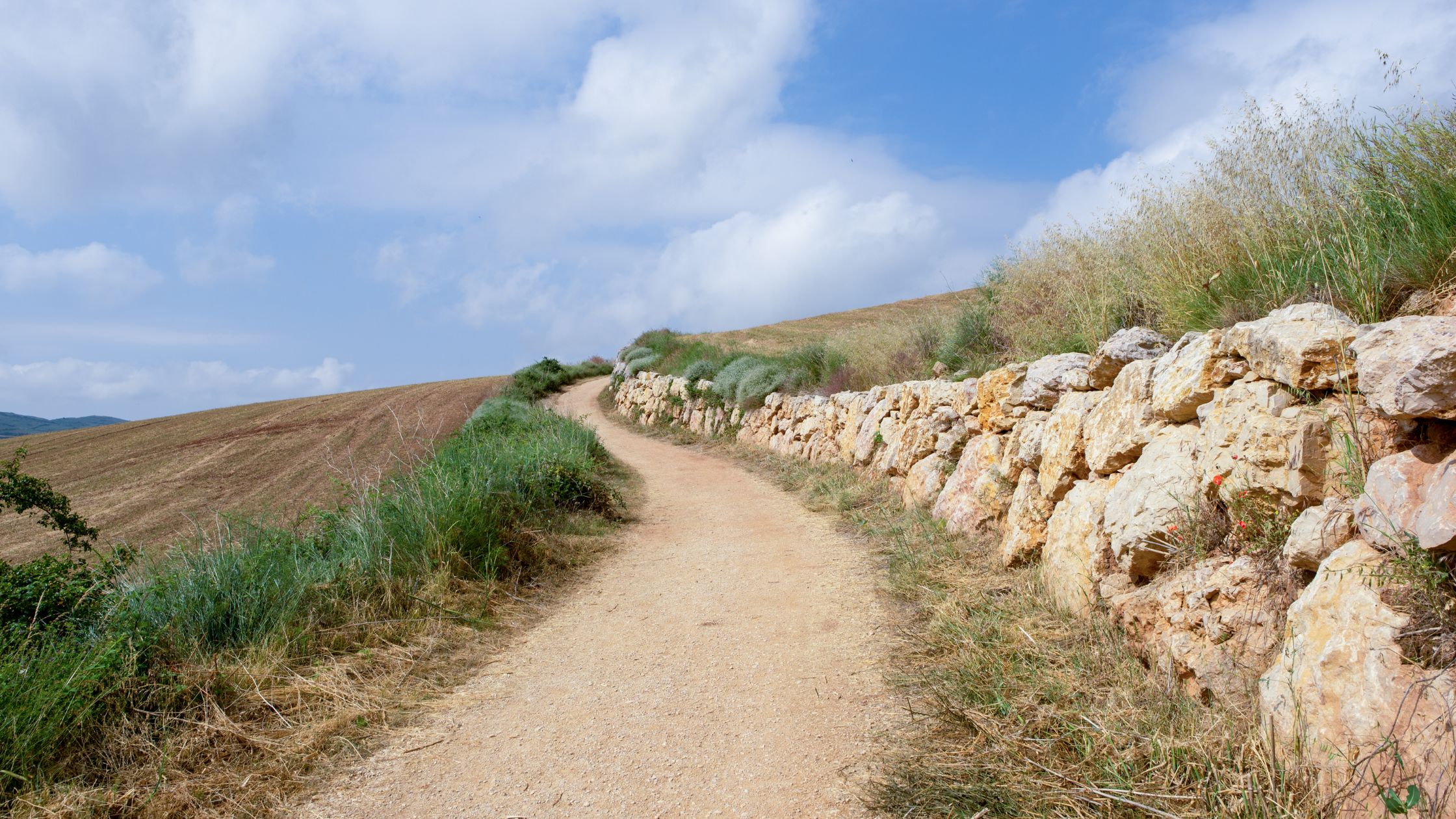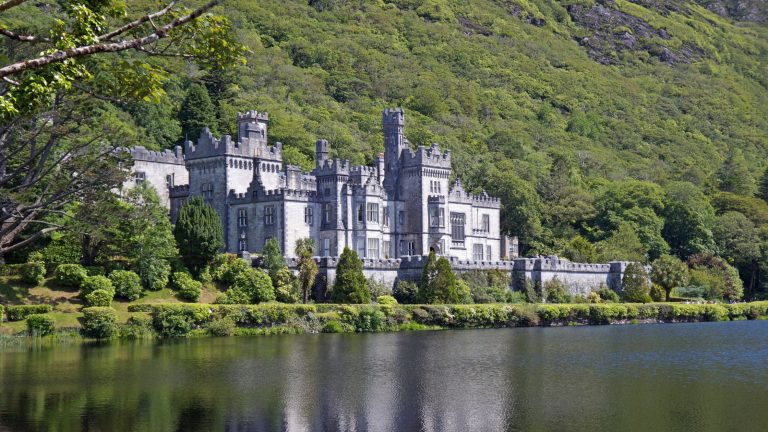When should your family discover Spain’s water wonders?
Spain beckons with 300 days of annual sunshine and over 600 Blue Flag beaches, but timing your family adventure perfectly transforms a good vacation into an extraordinary one.
Whether your crew gravitates toward the Mediterranean’s warm embrace or the serene beauty of glacial mountain lakes, understanding Spain’s seasonal rhythms ensures your family experiences the country at its absolute best.
The truth? May, June, and September emerge as the golden months for families seeking that sweet spot where comfortable temperatures meet manageable crowds and reasonable prices—though each season offers its own magic for different family priorities.
May and June are also the best months to walk the Camino de Santiago, if you’re looking for the best time to go to Spain and get your step count up!
Spain’s incredible diversity means you’ll find ideal conditions somewhere year-round, but strategic timing amplifies every experience. From watching your children paddle across Lake Sanabria’s glacial waters while golden eagles soar overhead to building sandcastles on Costa Brava’s crystal-clear shores, we’re guiding you through exactly when to go, where to explore, and how to weave together coastal adventures with inland lake discoveries for an unforgettable Spanish family odyssey.
What are the best months for families to visit Spain?
Late spring and early autumn reign supreme for family travel to Spain. May stands out as the single best month overall—imagine comfortable 20-25°C temperatures perfect for active children, blooming countryside bursting with color, and attractions operating in full swing without the suffocating summer crowds. Your family can comfortably explore Seville’s cobblestone streets in the morning, then cool off at a beach or lake in the afternoon without anyone overheating or melting down.
June follows closely behind, offering genuine beach weather as Mediterranean waters warm to a swimmable 20-22°C. The magic of early June lies in its timing: Spanish schools remain in session until mid-month, meaning you’ll beat the domestic tourism surge while still enjoying long, sun-drenched days perfect for maximizing your adventure time. Your 7-9 year olds can try kayaking at Nerja’s stunning Playa de Burriana or paddle across the turquoise lagoons of Ruidera without battling peak-season crowds.
September emerges as the value champion—arguably the most underrated month in the Spanish calendar. Picture this: the Mediterranean has spent three months warming to its annual peak of 24-26°C, creating bath-like swimming conditions, yet the hordes have departed as European schools reopen. Prices drop 20-40% from summer peaks, queues at attractions evaporate, and the weather remains gloriously warm without the brutal heat that can exhaust young children. For multi-generational groups where grandparents prefer milder conditions, September’s 22-28°C temperatures offer perfect comfort.
October extends the golden window, particularly in southern regions. The Costa del Sol and Andalusian lakes like Embalse de Iznájar still deliver warm, pleasant weather while northern areas begin cooling. Cultural exploration becomes delightful as cities like Madrid, Barcelona, and Granada no longer simmer in summer’s intensity. Your family can tackle the Alhambra or Sagrada Familia without the oppressive heat that makes sightseeing with children challenging.
Avoid late July through mid-August unless your family thrives in extreme heat. Interior cities regularly exceed 35-40°C, testing everyone’s patience and energy. Crowds surge to overwhelming levels, prices skyrocket, and attractions overflow with multi-hour waits. If summer break constraints force July-August travel, focus exclusively on northern coasts (Basque Country, Asturias) or beach-centric destinations where you can retreat to water when temperatures soar.
How do Spain’s seasons shape your family adventure?
Spring awakens Spain with spectacular beauty. March through May brings the countryside alive with wildflowers, orange blossoms perfume Andalusian air, and temperatures climb from cool to comfortably warm (9-24°C). Early spring suits cultural exploration perfectly—Madrid’s museums, Toledo’s medieval streets, and Barcelona’s architectural marvels become accessible without summer’s sweltering conditions. By April and May, beach time becomes feasible on southern coasts, and inland lakes like Lake Sanabria begin welcoming swimmers as waters gradually warm.
Easter week (Semana Santa) demands special attention. This moveable feast—occurring in March or April—transforms cities like Seville, Málaga, and Granada into spectacular stages for religious processions, but also brings massive crowds and premium prices. If your family craves authentic cultural immersion, Semana Santa offers unforgettable experiences with elaborate floats, traditional music, and deeply moving ceremonies. Book accommodations 3-6 months ahead and prepare for bustling streets. Alternatively, schedule your visit a week before or after to enjoy spring’s beauty without the crush.
Summer splits into two distinct periods with dramatically different implications. Early summer (June through early July) delivers excellent family conditions—warm beach weather, all attractions operational, and manageable crowds until Spanish schools release mid-June. Then comes peak summer’s intensity. July and August bring Spain’s hottest, busiest, most expensive weeks. Mediterranean beaches overflow with families, coastal resorts reach capacity, and prices double or triple. Yet for beach-focused families comfortable with heat and crowds, summer offers maximum water sports opportunities, longest days (14-15 hours of daylight), and the warmest swimming conditions.
Smart summer strategies exist: Target northern Spain’s milder “Green Coast” where temperatures hover around a comfortable 22-26°C. San Sebastián, Costa Brava’s northern reaches, and Asturias provide beach experiences without southern Spain’s furnace-like intensity. Or embrace inland lakes—Lake Sanabria, the Lagunas de Ruidera, and Embalse de Riaño offer refreshing mountain settings where temperatures remain 5-10 degrees cooler than coastal areas, calm waters suit young swimmers perfectly, and the scenery rivals anything on the Mediterranean.
Autumn unfolds as Spain’s secret season. September delivers summer’s benefits without its drawbacks—warm seas, excellent weather, vibrant energy, but with breathing room. October maintains pleasant conditions in southern regions while northern areas showcase stunning fall colors. Multi-generational families particularly appreciate autumn’s moderate pace and comfortable temperatures (18-24°C) that suit both energetic children and grandparents preferring gentler conditions. Grape harvest season paints wine regions in golden hues, and local festivals celebrate traditions without the tourist-targeted feel of summer events.
Winter presents a split personality. Interior Spain and northern regions turn genuinely cold (2-14°C), with Madrid sometimes freezing and mountain areas accumulating snow. Yet southern coasts and especially the Canary Islands maintain mild, pleasant conditions. Budget-conscious families discover extraordinary value from November through February (excluding Christmas holidays)—prices plummet 50-70%, attractions become wonderfully accessible, and you’ll experience authentic local life rather than tourist scenes. The Canary Islands serve as Spain’s winter escape, offering year-round beach weather when mainland coasts turn too cool for swimming.
Where should families explore Spain’s spectacular coastlines and hidden lake gems?
Spain’s coastal diversity astounds, but certain destinations rise above others for families. The Costa Brava captures imaginations with its dramatic cliffs, crystalline waters, and comprehensive family infrastructure. This Catalonian coastline boasts certified Family Tourism Destinations like Lloret de Mar and Roses, where supervised mini-clubs organize daily activities for children while parents relax. Tossa de Mar combines a medieval walled town perfect for exploration with excellent beaches like Playa Grande. For snorkeling adventures, the Medes Islands Marine Reserve near L’Estartit offers Spain’s best underwater visibility—your children can spot octopus, starfish, and colorful Mediterranean fish in gin-clear waters.
Timing matters here: Visit Costa Brava from late May through June or in September when water temperatures reach comfortable levels (20-24°C) but crowds remain manageable. July and August see the coastline packed with European families, though the mini-clubs and organized activities truly shine during peak season.
The Costa del Sol delivers year-round appeal with 300+ days of sunshine, making it ideal for families seeking reliability. Nerja stands out with its spectacular Playa de Burriana—awarded Quality certification and featuring kayak tours to coastal caves, pedal boats for young adventurers, and that magical Andalusian vibe. Marbella’s Playa Real de Zaragoza offers calm, shallow waters perfect for toddlers and young children, while Estepona charms with its authentic historic quarter and sheltered Playa del Cristo cove. The Costa del Sol shines brightest in May-June and September-October when temperatures moderate from summer’s 30-35°C intensity to a family-friendly 22-28°C.
Salou on the Costa Dorada might be Spain’s ultimate family destination, anchored by PortAventura World—Europe’s second-largest theme park complex. Imagine your mornings on wide, shallow Blue Flag beaches where children safely splash while you watch from beach clubs, then afternoons riding roller coasters themed to ancient civilizations or cooling off at Caribe Aquatic Park. The town itself embraces families with pedestrianized promenades, beach playgrounds built into the sand, and accommodation options from budget-friendly apartments to themed hotels with exclusive early park access. Visit from June through September for full PortAventura operations, but target June or September to avoid August’s peak chaos.
Yet Spain’s most compelling water experiences often lie inland, away from saltwater entirely. Lake Sanabria in Zamora province claims the title of Spain’s largest natural lake—a 369-hectare glacial masterpiece surrounded by ancient oak forests within a protected natural park. Multiple sandy beaches dot its shores, offering calm, wave-free swimming perfect for young children still building confidence. Your family can paddle kayaks exploring hidden coves, board the solar-powered Helios Cousteau catamaran to peer at the lake floor through underwater cameras, or hike the 16-kilometer trail circling the entire lake with options to bail out at various points.
What makes Sanabria magical? The sense of pristine wilderness combined with excellent facilities. Eagles soar overhead, the legendary Iberian wolf population roams nearby Sierra de la Culebra, and over 1,500 plant species create a botanist’s paradise. Yet you’ll find campsites with modern amenities, beach bars serving local Zamoran cuisine, and that rare balance of nature immersion and family comfort. Visit from late May through September when water temperatures warm sufficiently for swimming—though know that glacial origins mean even summer waters remain refreshingly cool.
Embalse de Riaño in León province offers Spain’s answer to Norwegian fjords—a massive reservoir with alpine peaks plunging dramatically into turquoise waters, earning the nickname “Leonese Fjords.” Your family can board a 60-seat catamaran for tours that include local product tastings while cruising past submerged villages (the original town of Riaño lies 65 meters underwater). Older children and teens gravitate toward kayaking and stand-up paddleboarding, while a scenic overlook 500 meters above the water features a giant swing and metal heart frame where family photos become Instagram-worthy. The Picos de Europa mountains create a stunning backdrop for this less-touristy gem.
The Lagunas de Ruidera in Castilla-La Mancha present something utterly unique: fifteen interconnected turquoise lagoons strung across 30 kilometers, linked by waterfalls and underground caves. Each lagoon offers distinct character—some bustling with families at designated swimming areas, others secretive and wild. Your family can kayak through underwater caves, dive into crystal-clear pools at Laguna del Rey (the most popular), cycle a flat 21-kilometer trail connecting multiple lagoons, or tackle hiking routes of various difficulties. This multi-lagoon system allows you to find your perfect spot regardless of crowd tolerance or activity preference.
Embalse de Iznájar claims the title of Andalusia’s largest reservoir and delivers an unexpected gift: Valdearenas Beach, a 1.5-kilometer sandy freshwater beach that rivals anything on the coast. The dramatic white village of Iznájar perches on cliffs above the lake, topped by a Moorish castle, while the beach below offers water sports rentals, beach bars, and that relaxed Spanish atmosphere without resort commercialization. For families seeking coastal beach vibes with calmer inland lake conditions, Iznájar hits the sweet spot. Visit late May through September for swimming season, but weekdays over weekends to avoid the Spanish families who’ve discovered this gem.
When do Spain’s vibrant festivals welcome families?
Spain’s festival calendar pulses with color, music, and celebration year-round, though family suitability varies wildly. Semana Santa (Holy Week) represents Spain’s most significant cultural event, transforming cities nationwide during the week leading to Easter. Seville, Málaga, and Granada stage the most elaborate processions—massive floats bearing religious statues carried by robed brotherhoods, accompanied by haunting music and deep reverence. Children find the spectacle mesmerizing, and the week offers profound cultural immersion into Spanish Catholic traditions.
Timing Semana Santa requires flexibility since Easter dates shift annually between late March and late April. This mobility affects your entire planning calendar—if Easter falls in late March, April becomes your optimal spring visit window; if it lands in late April, May opens as the prime month. Expect crowds, book far in advance (3-6 months), and prepare for premium pricing in major celebration cities.
Las Fallas in Valencia (March 15-19) creates controlled chaos that families either love or avoid. This five-day celebration features enormous satirical sculptures (ninots) displayed throughout the city, culminating in La Cremà when everything burns in spectacular bonfires at midnight on March 19. Daily fireworks displays (mascletàs) at 2 PM shake the ground with synchronized explosions—thrilling for older children, overwhelming for sensitive younger ones. The energy, artistry, and pure spectacle captivate, but crowds surge and noise levels challenge. If your family thrives on sensory-rich experiences and your children handle crowds well, Las Fallas delivers unforgettable memories.
Summer brings regional fiestas throughout Spain. San Fermín in Pamplona (July 7-14) centers on the famous Running of the Bulls—decidedly not a family participatory activity. However, the broader festival includes family-friendly elements: parades, traditional Basque dancing, concerts, and carnival atmosphere. Older children and teens fascinated by Spanish culture find the festival’s energy compelling, though parents must clearly establish that bull-running observation only, from safe vantage points, is the limit. Use San Fermín as an educational moment about Spanish traditions, risk-taking culture, and the controversial practice of bullfighting.
La Tomatina in Buñol (last Wednesday of August) epitomizes Spain’s playful spirit—a massive tomato fight where 20,000 people hurl 150,000 tomatoes in an hour of glorious, messy chaos. Children must be at least 6 years old and accompanied by adults, and participants should genuinely enjoy getting completely covered in tomato pulp. The event requires advance tickets and sells out months ahead. For adventurous families with children aged 7-9 who find the idea hilarious rather than horrifying, La Tomatina delivers an experience they’ll recount for years.
Local fiestas throughout summer offer more intimate, authentic experiences than mega-festivals. Virtually every Spanish town celebrates its patron saint with week-long festivities including concerts, paella competitions, traditional dancing, and fireworks. These local celebrations welcome families warmly, often featuring children’s activities during daytime hours before adult parties begin at night. Coastal towns like Nerja’s summer feria or the Moors and Christians festivals along the Costa Blanca provide cultural richness without overwhelming crowds.
Autumn brings harvest festivals and regional celebrations. September and October see wine festivals in La Rioja and Catalonia where families can participate in grape harvest activities, traditional stomping (children love this!), and countryside celebrations. These events offer educational value as children learn about winemaking traditions, agricultural cycles, and Spanish rural life while enjoying festivities in stunning vineyard settings.
What weather patterns should shape your Spain timing?
Spain’s climate varies dramatically by region, demanding matching destination to season. Mediterranean coastal areas enjoy 300+ sunny days annually with hot, dry summers (26-32°C) and mild winters (10-18°C). This climate makes Costa del Sol, Costa Blanca, and Balearic Islands viable nearly year-round, though winter swimming pushes comfort limits except on the warmest southern beaches.
The interior plateau spanning Madrid, Toledo, and Castile experiences continental extremes—summers regularly hit 35-40°C while winter nights freeze. Visit these regions exclusively during shoulder seasons (April-May, September-October) when temperatures moderate to a comfortable 18-25°C perfect for the walking that sightseeing demands. July and August render Madrid genuinely miserable for families—imagine dragging exhausted, overheated children through museums and monuments while everyone melts.
Northern “Green Spain” (Galicia, Asturias, Basque Country) marches to different rhythms, with oceanic climate bringing year-round rainfall and cooler summers (20-26°C). This region shines during July and August when southern Spain bakes—San Sebastián offers delightful beach weather without Costa del Sol’s intensity, and the lush, green landscapes explain the region’s nickname. Expect rain possibility any time of year and pack layers even in summer.
Inland lakes span climate zones, but most occupy mountain settings that remain cooler than coasts. Lake Sanabria, Embalse de Riaño, and Lagos de Covadonga nestle in northern mountains where summer temperatures hover around 22-28°C—perfect for active families. Winter renders many mountain lakes inaccessible due to snow, while spring brings wildflowers and flowing waterfalls. Andalusian reservoirs like Iznájar follow Mediterranean patterns with swimmable conditions from May through October and year-round mild weather.
School holiday periods dramatically affect your Spain experience. Spanish schools release from mid-June through mid-September, creating peak domestic tourism coinciding with European summer holidays. Spanish families flock to coasts during these months, particularly August when many businesses close and entire cities seemingly relocate to beaches. Easter week (Semana Santa) triggers another major movement, especially impacting Andalusia.
International families should note that European school calendars differ from North American schedules. Early June remains relatively quiet as European schools continue, but late June through late August sees full family travel mode. October half-term (late October week) brings a minor spike in UK and Irish families, but nothing approaching summer intensity.
Strategic timing around these patterns makes enormous difference. Traveling the first two weeks of June or first three weeks of September means you’ll enjoy near-perfect weather with significantly fewer crowds and substantially lower prices than peak weeks. The same Costa Brava beach that costs €200 nightly in August might be €120 in June—a 40% savings for essentially identical weather and superior experience quality.
Your family’s Spain adventure awaits, and timing transforms everything. Whether you’re watching your children discover kayaking on Lake Sanabria’s glacial waters, building sandcastles on Costa Brava’s golden shores, riding roller coasters at PortAventura, or soaking in cultural richness at local fiestas, Spain delivers extraordinary family memories. Choose your season wisely, balance coastal beauty with inland lake serenity, and discover why families return to Spain year after year—each visit revealing new wonders in this spectacularly diverse country where every season beckons with its own magic.






